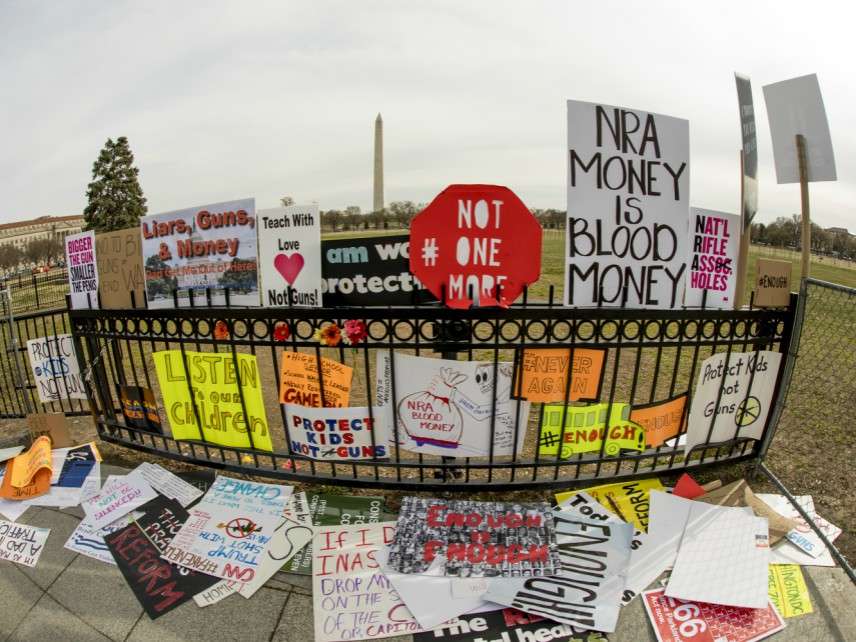Irrational Fear of Mass Shootings Can't Justify Unconstitutional Gun Control
Stinging insects kill more Americans than mass shooters do.

"Americans are now more likely to be shot to death than to die in a car accident," Margaret Renkl declares in a New York Times op-ed piece calling for more gun control. Since Renkl is talking about mass shootings, which she says "are no longer so unthinkable," the implication is that the risk of being murdered with a gun is on the rise. But that risk is in fact much lower than it was in the 1970s, '80s, or '90s.
To back up her claim, Renkl links to a CDC fact sheet that shows guns killed slightly more Americans in 2015 than car crashes did. Yet 61 percent of those gun deaths were suicides, while 36 percent were homicides. Contrary to Renkl's implication, Americans are nearly three times as likely to die in a car accident as they are to be murdered with a gun.
Renkl deploys this misleading comparison of gun deaths and traffic fatalities to justify her own disproportionate fear of mass shootings, which account for a tiny share of firearm homicides, and of school shootings in particular, which are even rarer and have not become any more common in recent years. That is not the impression left by the recent March for Our Lives rallies, which showed that many teenagers have a grossly exaggerated sense of the dangers they face when they go to school.
Renkl says her husband, a high school English teacher, attended one of those rallies and afterward "texted me a photo he'd taken of himself standing in front of another marcher's sign. It read, 'Am I next?' For just a second, I couldn't breathe." Renkl had a similar reaction "when our oldest son, a new middle school math teacher, took me to see his first classroom. 'Just look at all these beautiful windows!' I said. 'Not exactly great for an active-shooter situation,' he pointed out. His words turned my heart to ice."
Renkl is afraid because other people are afraid, and she is not interested in considering whether those fears are reasonable. "Not only am I married to a schoolteacher, and the mother of one, I also have two younger sons in college," she writes. "Not a single day goes by when I don't worry about whether they will all be safe in their classrooms."
In reality, Renkl's sons are nearly 1,000 times as likely to die in a traffic accident as they are to die in a mass shooting, which is roughly as likely as being killed by a dog and only slightly more likely than dying from a lightning strike. Stinging insects kill more Americans each year than mass shooters do. Yet Renkl thinks the government should make policy decisions based on the shortness of her breath and the coldness of her heart.
"Everyone is worried about the threat of gun violence," Renkl says, "and almost everyone has a clear idea of what to do about it." Among other solutions, she mentions an "outright ban" on "semiautomatic weapons," a very broad category that includes the most popular guns for self-defense. Renkl seems unaware that the Supreme Court has already said such a ban would be unconstitutional.
"We don't need to repeal the Second Amendment," Renkl insists. According to the headline over her essay, criminalizing possession of all firearms except single-shot weapons and revolvers represents "a middle ground on guns." While that may be true at a March for Our Lives rally, the world outside looks different. It is more complicated but also less scary.


Show Comments (214)